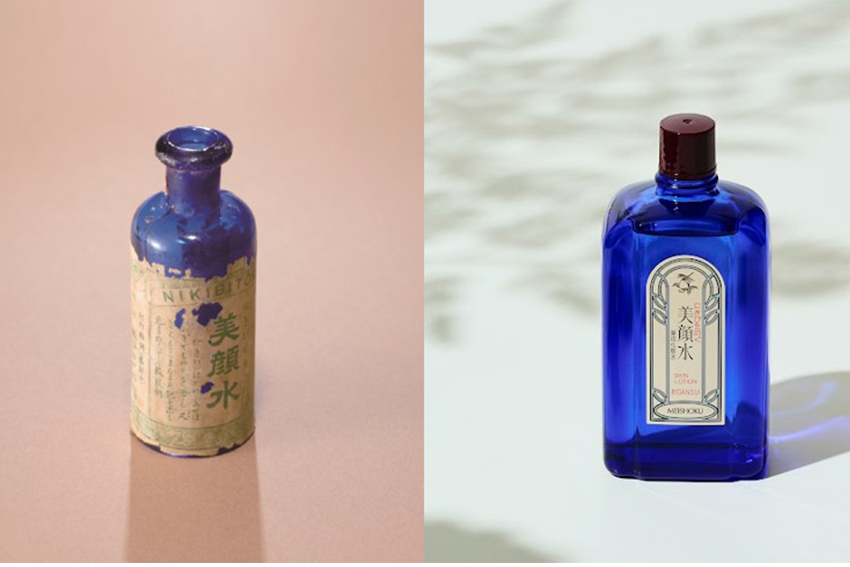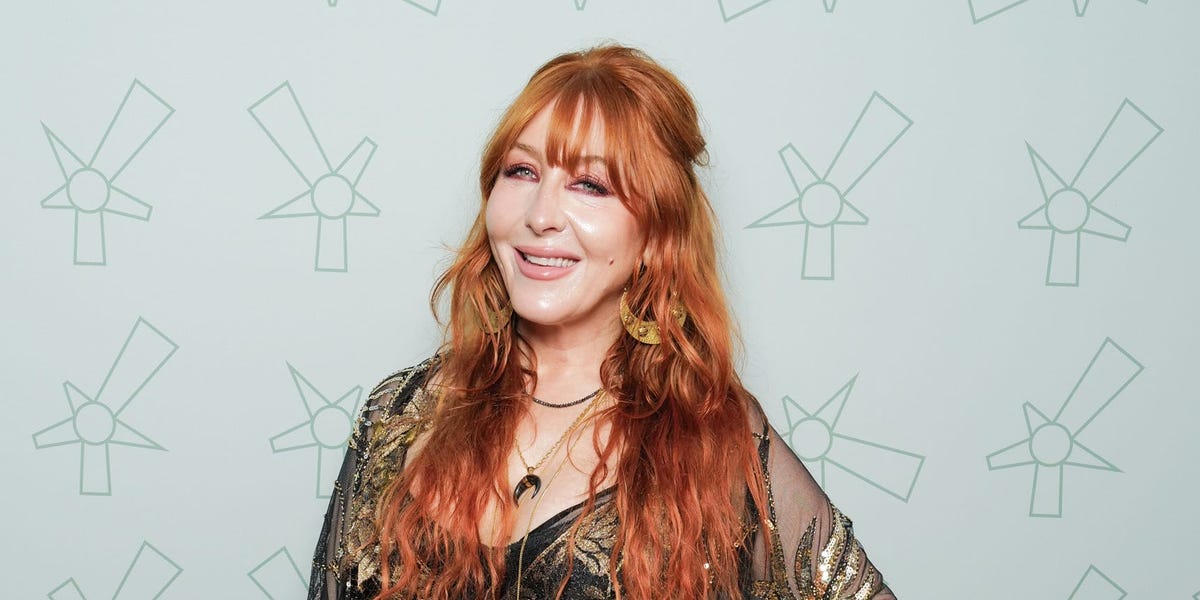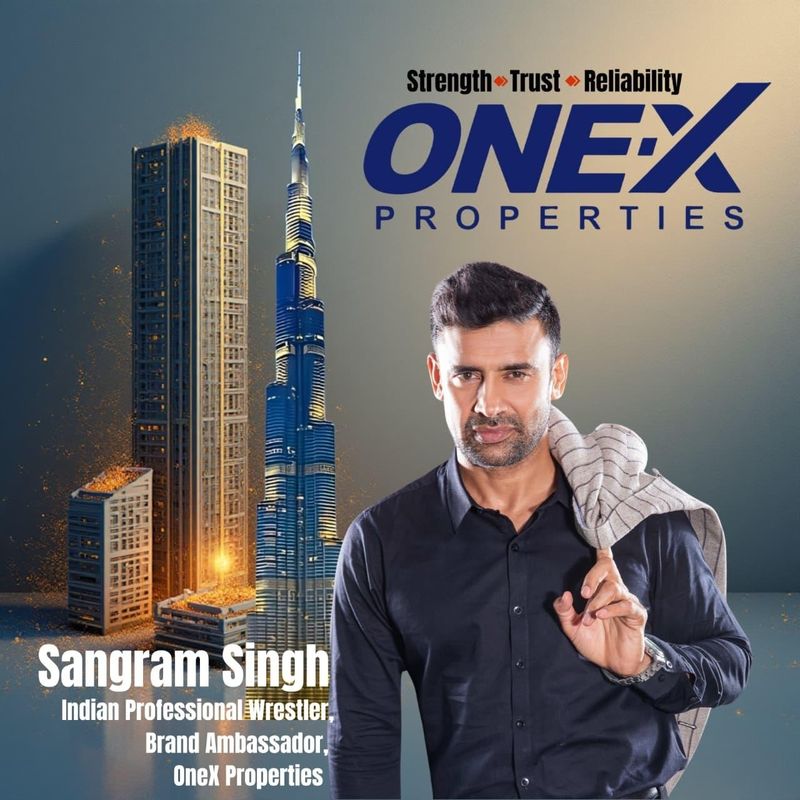Thank you for taking the time to speak with us today. To start, what is the current state of the cosmetics industry in Japan, and how does it compare with overseas competitors?
First of all, the competition among global cosmetic brands particularly from Europe, especially France, and from Korea has become extremely intense.
When we consider what sets Japanese brands apart, it’s important to recognize that there are natural limits to how much business we can conduct solely within Japan. Korea, for instance, is a relatively compact country; domestic demand alone isn’t enough to sustain large-scale business there. For that reason, Korean companies began exporting their own products to global markets at a very early stage.
Japan, by contrast, did not expand abroad so early. Historically, Japanese companies focused on the domestic market which was large and sophisticated and that was enough to thrive. But now, like Korea before us, we recognize that we must look outward and export our products to the world. In that sense, Japan is somewhat behind Korea.
What would you say are the main differences between Korean and Japanese cosmetics?
The histories are completely different. For example, Japan has a deeply rooted culture, cuisine, and sense of aesthetics. In the cosmetics world, we have been making products for Japanese people for about 140 years since our founding in 1885. Our company was founded with the creation of the “Bigansui Acne Lotion” by the founder to treat his wife’s acne, and it remains a long-selling product that continues to be loved to this day.
“Bigansui Acne Lotion” 140 years ago and now
Our expertise lies primarily in skincar. Japanese people are often said to have beautiful skin, and I believe that comes from our environment and lifestyle. Japan is a country surrounded by the sea, with a naturally humid climate, and our products have evolved to care for skin under those conditions. That long history of focusing on skin health and natural beauty is a major advantage as we expand globally.
Another factor is regulation. In Japan, the cosmetics industry is tightly regulated by the Ministry of Health, Labour and Welfare. There are strict laws governing product safety and ingredients, which has historically made it difficult for foreign cosmetic brands to enter the Japanese market. Because of this, Japan’s cosmetics industry developed in a self-contained way growing independently, with its own standards and traditions.
This is one of the reasons why Japan is so unique. If you visit a Japanese drugstore, you’ll see an extraordinary variety of cosmetics lined up on the shelves far more than in most countries. Many different manufacturers produce a wide range of products, among which customers can choose freely according to their personal preferences. It’s a rich, diverse ecosystem that’s quite distinctive to Japan.
However, this environment has also become what we call a “red oceann,” a market saturated with competition. Previously, cosmetics made under Japanese regulations had an advantage throughout Asia. If a product complied with Japanese standards, it was effectively given a “free pass” to enter many Southeast Asian markets. But now, as other countries particularly China have developed their own regulatory systems, this is no longer the case.
Each region now has its own rules: China’s system is based on Chinese regulations, Europe follows European standards, and Southeast Asian countries are influenced by both. So, for Japanese cosmetics to succeed abroad, we must produce them according to each country’s regulatory framework. Korean companies understood this early on, and they built their industries accordingly developing pop culture through dramas and music, which in turn promoted Korean cosmetics globally.
Japan didn’t need to do that for a long time, because our domestic market was large enough to sustain us. But now, we find ourselves competing with Korean and Chinese cosmetics across Asia. Korean cosmetics currently lead in trend and speed, and Chinese products are rapidly improving in quality. Japan, with its long history, is only now beginning to make a serious global push.
We try to support an organization called “the Japanese Cosmetic Industry Association (JCIA),” which has recently begun coordinated efforts to promote Japanese cosmetics internationally. We have developed an enormous range of products around 60,000 in total and are planning to introduce selected products to the global market.
You mentioned the difference in product cycles between Japan and Korea. Could you elaborate on that?
Yes, certainly. In Korea, the cosmetics market moves at an extremely fast pace. Korean manufacturers tend to produce trend-driven products. One brand may launch, sell quickly, and then disappear without reorders.
By contrast, Japanese manufacturers take pride in creating products with a long life cycle. We aim to maintain consistent quality and allow consumers to use our products for years, even for decades. This reflects a cultural difference — Japan values longevity, stability, and trust, while Korea focuses on speed, novelty, and visual impact.
For example, Korean cosmetics are often very fashionable and beautifully presented, but when customers return to purchase the same product later, they sometimes find it has already been discontinued. In Japan, we try to ensure that a product people love will remain available and reliable for a long time.
You also mentioned Japan’s demographic challenges, the shrinking population and aging society and the impact this has on domestic demand. With an increasing number of people over 65, do you see new opportunities, for example in the anti-aging or health-related beauty markets? How is your company addressing these demographic changes?
That’s an excellent question. Japan’s aging population is both a challenge and an opportunity. The proportion of people over 65 is already high and will reach around 33 percent by 2035. Many older Japanese consumers possess significant financial assets, and we see this demographic as an important market to serve.
If you look at the data, you can see how the domestic cosmetics market has changed. I joined the company in 1998, and around 2017, we saw a major increase in inbound demand foreign visitors coming to Japan to purchase Japanese cosmetics. They would literally empty their suitcases to fill them with products. But then the pandemic hit, and that growth suddenly stopped.
Even after restrictions lifted, the total market size remained smaller than when I first joined the industry. People’s behavior had changed. The new inbound market is less about buying things and more about experiencing them experiences have become more valuable than physical purchases.
At the same time, during the pandemic, online shopping technology advanced rapidly. Consumers in countries like China can now buy high-quality products domestically. Counterfeit products have largely disappeared, and the quality of local brands has improved. As a result, there’s less motivation to travel to Japan just to buy cosmetics.
We also analyzed export trends. Before the pandemic, exports of Japanese cosmetics to China grew steadily, but that has since declined. Major brands have seen a downturn because of this. Our own subsidiary in Shanghai, Shanghai Momotani, has been similarly affected.
On the other hand, imports into Japan particularly from Korea continue to grow. France has maintained a steady level of exports to Japan as well. Overall, when we compare data among major exporting countries, Japan is the only one showing a decline. That realization has sparked a sense of urgency in our industry.
Many of us now believe this is a pivotal moment, an opportunity for Japanese manufacturers to finally take exporting seriously. The JCIA and other companies are aligning around this goal. By combining Japan’s advanced technical expertise, research, and manufacturing standards, we can compete effectively overseas.
As for our company specifically, we’re broadening our focus beyond traditional cosmetics. We now operate under a larger vision of beauty and health. Japan’s government has a policy promoting “healthy longevity” encouraging people not only to live longer but to remain healthy and active throughout their lives.
Our mission is aligned with that. We want to help people achieve a beautiful, healthy life not just through skincare, but through holistic wellness. We offer skin care products, dietary supplements, and medical products comprehensively. For instance, we’re exploring the relationship between skin health and gut health understanding how intestinal bacteria affect skin appearance.
We’re also looking at sun protection as a global category, since UV care is essential worldwide. Our international division is already experiencing strong sales of our overseas brand “Cvita” sunscreen, and we plan to further strengthen this in the future.
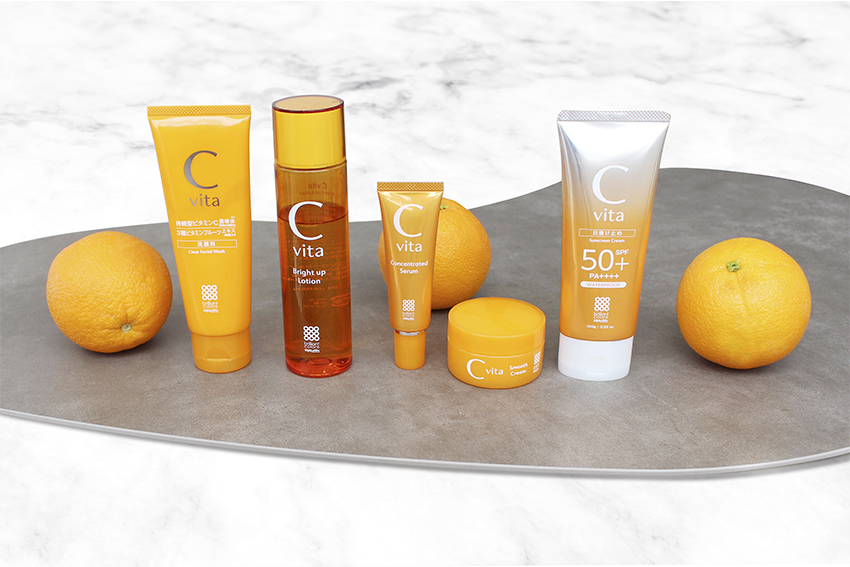
Our overseas brand “Cvita” sunscreen
In addition, we see great growth potential in cosmetic medicine aesthetic treatments performed by doctors. Many people in their 60s and 70s today are proactive about maintaining their appearance. Some women, after raising their children and reaching retirement age, choose cosmetic medicine to take back their lives. For them, beauty and confidence are empowering. Cosmetic medicine helps them feel youthful again by removing wrinkles or spots, brightening the skin and that brings genuine happiness. It’s not just about vanity; it’s about confidence and quality of life. We want to support such people in both beauty and health, and we are currently partnered with two cosmetic clinics to support our customers in every way.

MOMO CLINIC, a partnered beauty clinic
That’s a fascinating perspective especially how Japan’s demographic changes and new lifestyle trends are shaping both challenges and opportunities. I’d like to turn now to your international business strategy. Your company currently exports to over 30 countries, including Australia, the United States, and Thailand, and you have a subsidiary in Shanghai. From your point of view, which country or region represents the strongest business opportunity for your company and why? Is it China, given your presence there? Or perhaps markets like Australia? Or even regions you haven’t yet entered?
You’re from Australia, correct? I’ve visited Australia myself. It’s a wonderful market.
In terms of potential, each country’s opportunity is strongly influenced by its political and economic stability, which we might call “country risk.” For example, when the Japanese government first encouraged businesses to expand into China, many companies opened drugstores in Shanghai and other major cities. However, in recent years, the Chinese government has tightened regulations, requiring full disclosure of ingredients and other detailed product information that Japanese companies are often reluctant to release.
As a result, many Japanese stores in China have closed, and it has become increasingly difficult to operate there. In that sense, China is a complicated market. Of course, its population and purchasing power remain enormous, but for now, we are choosing to take a step back from aggressive expansion there.
On the other hand, Australia is a stable and promising market for us. Another exciting new area is Poland. Poland is part of the European Union, but it is still developing rapidly. It’s attracting attention, with many major European manufacturers setting up factories there.
The Polish market is hungry for new, high-quality products. Together with our French consultants and Japanese researchers, we are developing products suited to European consumers, starting with Poland. I believe this will be a strong growth area in the years ahead.
That’s very interesting. In expanding into these new markets, what is your strategy? Will you look to open subsidiaries, or do you plan to pursue partnerships?
We are always looking for strong local partners. In the past, when Japanese products entered Southeast Asian markets, “Made in Japan” itself was a powerful selling point. Anything produced in Japan was welcomed without question. That’s no longer the case. Today, we must compete on relevance, quality, and compliance with local regulations.
To give you some context, our business model in Japan involves selling to drugstores on a consignment basis. If products don’t sell within a certain period, retailers can return them. This system means we often receive returned inventory, which used to be discounted and exported to developing markets. That strategy once worked well, but in today’s transparent digital world, it’s no longer sustainable. Consumers everywhere can compare prices and product information online, so we can’t simply resell excess stock abroad.
We now have to develop products that meet the needs, regulations, and tastes of each target market from the beginning. This requires serious investment in planning, compliance, and documentation. For instance, to do business in Europe, we must prepare detailed regulatory dossiers within strict timeframes. Companies capable of doing that quickly will have a clear competitive edge.
So, our strategy is to partner with capable, reliable local firms in each market, companies that understand the consumer landscape but value the Made in Japan standard. Together, we can combine local insight with Japanese quality and credibility.
That leads nicely into another area of interest: the tourism boom and the growing importance of digital engagement. Japan welcomed around 36.9 million tourists last year and is expected to reach 40 million this year, with a target of 60 million by 2030. Given this influx, there’s an opportunity to convert inbound visitors into long-term online customers. You have several digital initiatives, such as the RF28 online platform, the Cosmetic Museum, and your digital-native brand REGLAGE. How are you leveraging these digital offerings to connect with international consumers?
That’s an excellent question. Our company has long operated in the physical retail space particularly through drugstores. So, over the past few years, we have been focusing on making rapid progress in digital commerce.
We sell on platforms like Amazon, but what sells online is often different from what performs well in physical stores. For example, Amazon customers tend to buy items that meet specific needs or solve problems directly, rather than browsing for new discoveries like they might in a store.
Recognizing this, we created new brands specifically designed for digital audiences that emphasize clarity, convenience, and a direct connection to consumers. The life cycle of drugstore products has also become increasingly short: new products are launched each season, and those that don’t meet national sales benchmarks are quickly discontinued. This means a product someone loved in the spring might vanish from shelves by the next year.
For loyal customers, this can be frustrating. So we’re using our digital platforms to maintain continuity allowing customers to keep purchasing their favorite products even after they disappear from stores. REGLAGE is a good example of this approach. We use the same high-quality formulations and packaging, but with environmentally conscious updates, such as refillable or recycled materials. In this way, we can continue offering beloved products sustainably through online channels.
We also plan to launch a new digital-only brand that targets very specific niche markets. I can’t reveal too much yet, but it’s something you’ll soon see available through Amazon and other e-commerce platforms. Our goal is to use digital platforms not only for sales but as a means of building long-term relationships with customers worldwide.
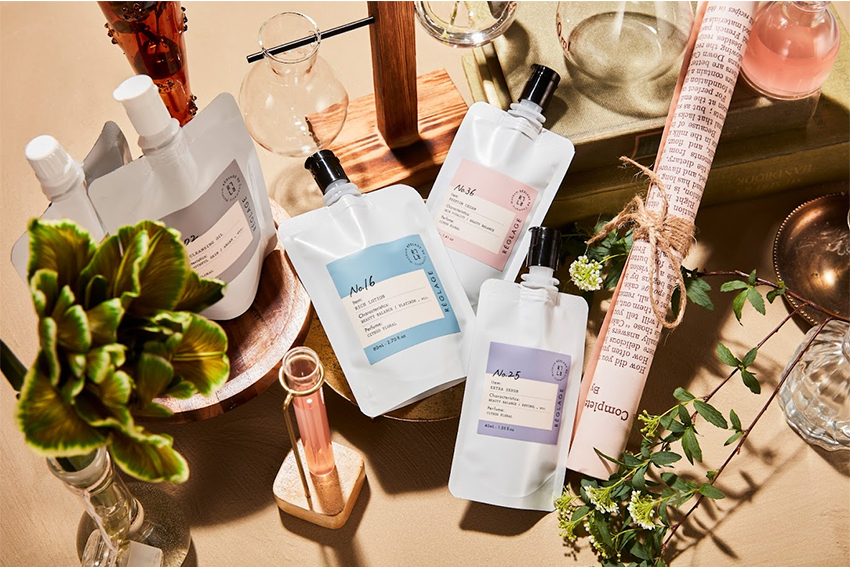
Digital-native brand called REGLAGE
Let’s turn now to your company’s philosophy and long-term vision. Momotani Juntenkan was founded in 1885, meaning you’ve now surpassed 140 years in operation. You describe your company as a “total beauty wellness group” with a creed of following nature’s will and serving people, a philosophy that unites science, craftsmanship, and compassion. Could you expand on your corporate vision and philosophy?
Our founding philosophy is deeply rooted in the idea of harmony with nature and service to humanity. The name Juntenkan comes from the Chinese concept of junten, which embodies the principle of acting in accordance with nature’s way and helping those in need.
Our founder was profoundly inspired by that philosophy. He believed business should exist not merely for profit but to improve people’s lives. That’s why our guiding principle has always been “Following Nature’s Will, Serving People.” We aim to blend natural wisdom with scientific understanding to create products that truly benefit individuals and society.
Interestingly, our foundation day is June 10 which can be pronounced as junten in Juntenkan. It’s a symbolic connection that reminds us of our origins. When the company was founded in 1885, just a few years after the Meiji Restoration, Japan was undergoing dramatic modernization. Yet our founder focused on maintaining integrity and compassion in business — values we continue to uphold today.
Even now, all our employees share that same philosophy. Our mission is to contribute to people’s health, beauty, and happiness, guided by nature and supported by science.
You’re also known for your research and development capabilities. Your company has established multiple research institutes and laboratories, such as Cosmetec Japan, and offers full-service OEM and ODM solutions. Could you tell us about the strengths of your OEM/ODM operations and your goals for their growth?
Of course. As a cosmetics company, it’s natural for us to develop and sell our own brands. But we also invest heavily in OEM (original equipment manufacturing) and ODM (original design manufacturing) because it allows us to refine our technology and broaden our expertise.
Before entering the OEM/ODM business, we primarily produced mass-market, affordable cosmetics, the kind often referred to as petit price or “cute and accessible” products. But by developing products for external clients, we gained experience creating high-end creams priced at 10,000 yen or even 100,000 yen. Working with those premium ingredients and formulations significantly raised the technical level of our researchers and engineers.
In our factories, products ranging from 1,000-yen items to luxury 100,000-yen products are made on the same production lines. This requires extraordinary attention to detail. Staff who handle high-end items become more meticulous overall, and that mindset carries over into all our production. So, in a sense, OEM work elevates our craftsmanship across the board.
For our researchers, OEM/ODM is also a form of creative competition — much like a dojo in martial arts. In Japan’s past, martial artists would travel between schools to test and refine their skills. Similarly, when our researchers develop OEM products for other brands, they compete intellectually and technically with other companies’ laboratories. This kind of competition drives innovation and quality improvement, benefiting both our OEM clients and our own brands.
That’s a wonderful analogy. Is expanding OEM/ODM internationally also part of your long-term strategy?
Yes, absolutely. I’m not young anymore, but I work with a dynamic team of younger leaders. Many of them are in their 30s who make decisions quickly and understand global trends. This agility allows us to communicate effectively with overseas partners, particularly in markets like China and Southeast Asia, where many of our OEM clients are based.
To succeed in OEM/ODM, you must have strong planning skills and a keen understanding of the latest trends. You also need a youthful, creative team that can think flexibly. At our company, young professionals with innovative ideas are guided by the wisdom of experience and it’s our biggest advantage.
We also work closely with female CEOs and executives, both in Japan and abroad. Many of our partners are women who understand cosmetics intuitively, and this helps build trust and collaboration.
Moreover, our factories meet the strictest international standards including those required by a major global retailer like Amazon. We are proud to be one of the few facilities in Japan certified to produce for these global chains. Our manufacturing also accommodates halal standards, which positions us well for expansion into Muslim-majority countries.
Looking ahead, we see strong potential in emerging markets especially in regions like Africa, where the population is young and eager for new products. While developed nations are aging, these markets are full of energy and opportunity. We want to collaborate with local partners there to build sustainable growth together.
At the same time, we will continue to honor Japan’s reputation for precision, safety, and quality. In a world where some leaders challenge established rules, we remain committed to fairness and integrity. But we also embrace the “new rule of no rules” meaning adaptability and creativity by working with the next generation. That, I believe, is the true strength of a company.
That’s an inspiring message. thank you very much, Mr. Momotani. Could you share a glimpse into your next chapter of what’s next for Momotani Juntenkan as you marked 140 years in business?
Our next chapter is about reimagining the essence of cosmetics.
Traditionally, cosmetics were marketed based on ingredients or functional claims like “contains vitamin C” or “reduces wrinkles.” But we want to go deeper. In a joint study with Yokohama National University, we found that “people who feel comfortable using skincare products have younger-looking skin.” By applying this result, we launched a new brand called “CHEF de BEAUTÉ” this year.
Everyone’s skin is different, as are their senses and emotions. So, we’re creating products that allow customers to choose based on how the texture and scent make them feel to personalize their skincare experience.
For instance, we’re developing product line inspired by natural Japanese scents, such as kinmokusei (osmanthus). It’s not simply the “scent of osmanthus,” but a scent that expresses the scene of osmanthus flowers scattered by rain and the scent of them fill the air as they evaporate with rainwater. These are expressions of harmony with nature an extension of our founding philosophy.
Our goal is to change conventional thinking in the cosmetics world: to move from mass production toward mindful, sensory, and sustainable beauty. If people around the world embrace this vision, it will mark a new era not just for our company, but for the entire Japanese cosmetics industry.
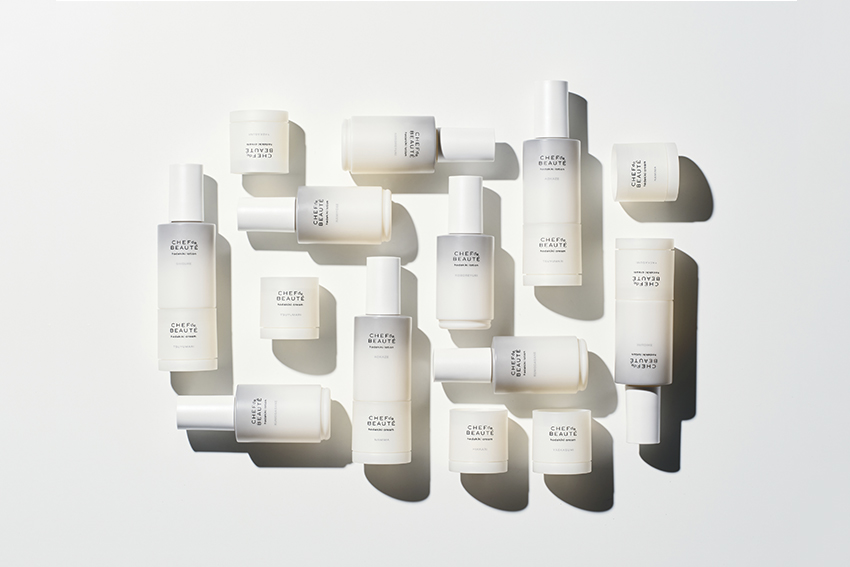
New brand “CHEF de BEAUTÉ” launched in 2025

